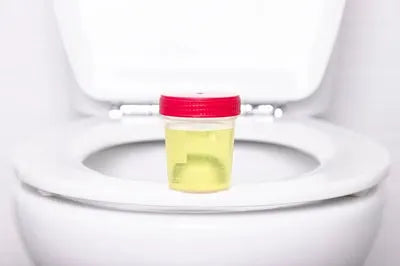You know that feeling when you really need to pee, but the moment you’re on the toilet, nothing happens? You wait, you try again, and still… nothing. It’s frustrating, confusing, and sometimes even a little scary. You might wonder what’s wrong with your body or feel embarrassed to talk about it, even with your doctor.
If this sounds familiar, you’re not alone. Many people experience what’s called urinary hesitancy, especially as they grow older. It’s one of those things that no one really warns you about, yet it quietly affects your comfort, confidence, and sometimes even your sleep. The good news is, you do not have to live with it in silence. Once you understand what’s causing it, you can take steps to manage it and feel more in control again.
What Is Urinary Hesitancy?
Urinary hesitancy means having difficulty starting the flow of urine, even when your bladder feels full. You might stand or sit for several seconds before the stream begins, or it may start and stop midway. Sometimes, the flow feels weak or slow.
It’s not just an inconvenience, it’s a sign that something might be affecting your urinary tract, nerves, or muscles. In men, this is often linked to prostate issues, while in women, it may be connected to pelvic floor or bladder changes due to aging, childbirth, or certain medical conditions.
Although urinary hesitancy can happen to anyone, it is most commonly experienced with age.
Common Causes of Urinary Hesitancy
Urinary hesitancy can have several causes, and sometimes, more than one factor is at play. Here are some of the most common ones:
1. Prostate Problems (in Men)
As men age, the prostate gland often becomes enlarged, a condition known as benign prostatic hyperplasia (BPH). An enlarged prostate can press on the urethra and make it harder for urine to pass through. You might notice a weak stream or find yourself straining to start urinating.
2. Bladder or Pelvic Floor Issues (in Women)
For women, weak pelvic floor muscles or bladder prolapse can interfere with urine flow. These muscles are crucial for controlling urination, and when they weaken, it can lead to hesitancy, leakage, or incomplete emptying.
3. Urinary Tract Infections (UTIs)
A UTI can cause inflammation in the urinary tract, making it painful or difficult to start urinating. You might also notice burning, urgency, or cloudy urine. Once the infection is treated, urinary hesitancy usually improves.
4. Nerve or Muscle Problems
Sometimes, the issue lies in the communication between your brain, bladder, and nerves. Conditions like diabetes, multiple sclerosis, or spinal injuries can disrupt these signals, leading to delayed or weak urination.
5. Medications and Lifestyle Factors
Certain medicines, such as antihistamines, decongestants, or antidepressants, can slow bladder contractions or tighten muscles around the urethra. Even holding your urine too often or sitting for long hours can contribute to urinary hesitancy over time.
Symptoms and Associated Problems
While urinary hesitancy symptoms may vary from person to person, most people notice a few common signs:
-
Difficulty starting the urine stream
-
A weak or interrupted flow
-
Feeling like your bladder hasn’t completely emptied
-
Dribbling after urination
-
Needing to strain or push to start urinating
These symptoms can make you feel uncomfortable, anxious, or even embarrassed, especially when you’re away from home or in public. Some people try to manage hesitancy by limiting fluid intake, thinking it will make urination easier. However, not drinking enough water can actually make the urine more concentrated, which may irritate the bladder and worsen the discomfort.
If urinary hesitancy becomes frequent or starts affecting your quality of life, it’s worth speaking to a healthcare professional. The sooner you address it, the easier it is to find relief and prevent complications.
Treatment Options for Urinary Hesitancy
Infographic Suggestion
5 Simple Ways to Manage Urinary Hesitancy
|
Tip |
What to Do |
|
🚶♂️ Stay Active & Move Often |
Gentle daily exercise, like walking or stretching, helps improve blood circulation and bladder function. Avoid sitting for too long, as inactivity can weaken bladder muscles. |
|
💧 Hydrate Smartly |
Drink enough water throughout the day to keep your bladder healthy and prevent infections, but avoid excessive intake at once. |
|
🧘♀️ Pelvic Floor Exercises |
Tighten your pelvic muscles (as if stopping urine mid-flow), hold for 5 seconds, then relax. Doing this several times daily improves control and reduces hesitancy. |
|
☕ Limit Bladder Irritants |
Reduce caffeine, alcohol, and carbonated drinks, they can irritate your bladder and make symptoms worse. Replace them with water or herbal teas. |
|
🕒 Give Yourself Time |
Don’t rush while using the toilet. Sit comfortably, take deep breaths, and relax your muscles. Sometimes, stress or tension around the bladder can delay the flow. |
The right urinary hesitancy treatment depends on what’s causing the problem. In most cases, doctors begin by identifying the underlying reason, whether it’s an infection, nerve issue, or blockage, and then recommend a combination of medical and self-care approaches.
Here are some common treatment paths:
1. Medical Treatments
-
Medication: For prostate-related hesitancy, alpha-blockers or other prescribed medicines can help relax muscles and improve urine flow.
-
Antibiotics: If a UTI is the cause, antibiotics can clear up the infection and relieve symptoms quickly.
- Surgery: In some cases of severe prostate enlargement or structural issues, minor surgery may be recommended to remove the blockage.
2. Pelvic Floor Exercises
Simple exercises that strengthen your pelvic muscles can make a real difference, especially for women. These exercises help you regain control over your bladder and improve your ability to start and stop urination naturally.
3. Lifestyle and Home Remedies
-
Stay hydrated: Drinking enough water helps flush out bacteria and keeps your bladder healthy.
-
Avoid caffeine and alcohol: These can irritate your bladder and make symptoms worse.
-
Take your time: Don’t rush when using the toilet. Give your bladder time to empty fully.
- Warm compress: Placing a warm cloth on your lower abdomen can relax muscles and make urination easier.
While it might feel awkward to discuss, being open with your doctor about what you’re experiencing helps ensure you get the right support. Remember, urinary hesitancy is treatable, and the right approach can help you feel more comfortable and confident again.
When the bladder doesn’t empty completely, a small amount of urine can remain inside and leak out later without warning, often while moving, coughing, or even after leaving the washroom. That’s where Friends Adult Diapers can offer gentle protection, keeping you dry, comfortable, and confident as you focus on improving bladder health without the worry of unexpected leaks.
Complications if Left Untreated
Ignoring urinary hesitancy can lead to more than just discomfort. If your bladder doesn’t empty completely, urine may back up and cause:
- Urinary tract infections (UTIs)
- Bladder stones
- Kidney problems
- Persistent leakage or overflow incontinence
Over time, the constant strain can also affect your mental wellbeing, leaving you anxious about finding restrooms or embarrassed about accidents. Addressing the issue early can help you avoid these complications and regain control of your day-to-day comfort.
Also Read : 4 Reasons Why You May be Experiencing Urinary Bladder Discomfort
Conclusion
It’s not easy to talk about urinary issues, and even harder to live with them quietly. But if you’ve been experiencing urinary hesitancy, know that it doesn’t have to stay this way. By understanding what’s happening in your body and seeking the right help, you can find relief and take back confidence in simple, everyday moments.
Remember, every small step, from exercises to lifestyle changes, can make a difference. And if you ever need support along the way, Friends is here to remind you that you’re not alone.
Product Recommendations
Frequently Asked Questions
1. Can women experience urinary hesitancy?
Yes, women can also experience urinary hesitancy, especially due to weakened pelvic floor muscles, bladder prolapse, or infections.
2. Is urinary hesitancy the same as urinary retention?
Not exactly. Urinary hesitancy is difficulty starting urination, while urinary retention is when the bladder doesn’t empty completely.
3. Can anxiety cause urinary hesitancy?
Yes. Emotional stress or anxiety can make the muscles that control urination tighten up, leading to temporary hesitancy.
4. Can urinary tract infections cause hesitancy?
Absolutely. UTIs can irritate the bladder and urethra, making it painful or difficult to start urinating.
5. Can urinary hesitancy go away on its own?
Sometimes, yes, especially if it’s caused by a temporary infection or medication side effect. But if it persists, it’s best to get checked to rule out underlying causes.





















